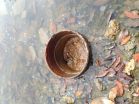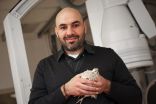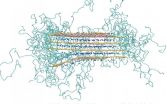(Press-News.org) Princeton University researchers have uncovered a previously unknown, and possibly substantial, source of the greenhouse gas methane to the Earth's atmosphere.
After testing a sample of abandoned oil and natural gas wells in northwestern Pennsylvania, the researchers found that many of the old wells leaked substantial quantities of methane. Because there are so many abandoned wells nationwide (a recent study from Stanford University concluded there were roughly 3 million abandoned wells in the United States) the researchers believe the overall contribution of leaking wells could be significant.
The researchers said their findings identify a need to make measurements across a wide variety of regions in Pennsylvania but also in other states with a long history of oil and gas development such as California and Texas.
"The research indicates that this is a source of methane that should not be ignored," said Michael Celia, the Theodore Shelton Pitney Professor of Environmental Studies and professor of civil and environmental engineering at Princeton. "We need to determine how significant it is on a wider basis."
Methane is the unprocessed form of natural gas. Scientists say that after carbon dioxide, methane is the most important contributor to the greenhouse effect, in which gases in the atmosphere trap heat that would otherwise radiate from the Earth. Pound for pound, methane has about 20 times the heat-trapping effect as carbon dioxide. Methane is produced naturally, by processes including decomposition, and by human activity such as landfills and oil and gas production.
While oil and gas companies work to minimize the amount of methane emitted by their operations, almost no attention has been paid to wells that were drilled decades ago. These wells, some of which date back to the 19th century, are typically abandoned and not recorded on official records.
Mary Kang, then a doctoral candidate at Princeton, originally began looking into methane emissions from old wells after researching techniques to store carbon dioxide by injecting it deep underground. While examining ways that carbon dioxide could escape underground storage, Kang wondered about the effect of old wells on methane emissions.
"I was looking for data, but it didn't exist," said Kang, now a postdoctoral researcher at Stanford.
In a paper published Dec. 8 in the Proceedings of the National Academy of Sciences, the researchers describe how they chose 19 wells in the adjacent McKean and Potter counties in northwestern Pennsylvania. The wells chosen were all abandoned, and records about the origin of the wells and their conditions did not exist. Only one of the wells was on the state's list of abandoned wells. Some of the wells, which can look like a pipe emerging from the ground, are located in forests and others in people's yards. Kang said the lack of documentation made it hard to tell when the wells were originally drilled or whether any attempt had been made to plug them.
"What surprised me was that every well we measured had some methane coming out," said Celia.
To conduct the research, the team placed enclosures called flux chambers over the tops of the wells. They also placed flux chambers nearby to measure the background emissions from the terrain and make sure the methane was emitted from the wells and not the surrounding area.
Although all the wells registered some level of methane, about 15 percent emitted the gas at a markedly higher level -- thousands of times greater than the lower-level wells. Denise Mauzerall, a Princeton professor and a member of the research team, said a critical task is to discover the characteristics of these super-emitting wells.
Mauzerall said the relatively low number of high-emitting wells could offer a workable solution: while trying to plug every abandoned well in the country might be too costly to be realistic, dealing with the smaller number of high emitters could be possible.
"The fact that most of the methane is coming out of a small number of wells should make it easier to address if we can identify the high-emitting wells," said Mauzerall, who has a joint appointment as a professor of civil and environmental engineering and as a professor of public and international affairs at the Woodrow Wilson School.
The researchers have used their results to extrapolate total methane emissions from abandoned wells in Pennsylvania, although they stress that the results are preliminary because of the relatively small sample. But based on that data, they estimate that emissions from abandoned wells represents as much as 10 percent of methane from human activities in Pennsylvania -- about the same amount as caused by current oil and gas production. Also, unlike working wells, which have productive lifetimes of 10 to 15 years, abandoned wells can continue to leak methane for decades.
"This may be a significant source," Mauzerall said. "There is no single silver bullet but if it turns out that we can cap or capture the methane coming off these really big emitters, that would make a substantial difference."
INFORMATION:
Besides Kang, who is the paper's lead author, Celia and Mauzerall, the paper's co-authors include: Tullis Onstott, a professor of geosciences at Princeton; Cynthia Kanno, who was a Princeton undergraduate and who is a graduate student at the Colorado School of Mines; Matthew Reid, who was a graduate student at Princeton and is a postdoctoral researcher at EPFL in Luzerne, Switzerland; Xin Zhang, a postdoctoral researcher in the Woodrow Wilson School at Princeton; and Yuheng Chen, an associate research scholar in geosciences at Princeton.
Support for the research was provided in part by the Princeton Environmental Institute, the National Oceanic and Atmospheric Administration, the National Sciences and Engineering Research Council of Canada, and the Yale Center for Environmental Law and Policy.
What drives some subsidiaries to strive for so much autonomy that they are actually harming the parent company? A new study in the Journal of International Marketing shows that these dysfunctional business relationships can be understood and improved using basic psychology.
"A subsidiary's desire for autonomy is psychological in nature. The desire is for more decision making authority in marketing decisions, and the ability to make these decisions without interference from headquarters. Subsidiary employees want to work more independently even if this means risking conflicts ...
WEST LAFAYETTE, Ind. - A laboratory at Purdue University provided a critical part of the world's first transistor in 1947 - the purified germanium semiconductor - and now researchers here are on the forefront of a new germanium milestone.
The team has created the first modern germanium circuit - a complementary metal-oxide-semiconductor (CMOS) device - using germanium as the semiconductor instead of silicon.
"Bell Labs created the first transistor, but the semiconductor crystal made of purified germanium was provided by Purdue physicists," said Peide "Peter" Ye, a Purdue ...
Many people have strong habits when it comes to shopping, preferring favorite stores and favorite brands. But a new study in the Journal of Marketing Research suggests that these same shoppers may have hidden habits that are hurting sales.
"Evidence suggests the existence of customer habits, beyond repeat purchases, that have serious implications for profits and firm performance. Whereas repeat purchase habits have been studied and shown to have a positive impact on sales, there are other common habits which have a notably negative effect on a company's bottom line," ...
Johns Hopkins computers scientists, who have already used Twitter posts to track flu cases, say their techniques also show promise as a tool to gather important information about some common mental illnesses.
By reviewing tweets from users who publicly mentioned their diagnosis and by looking for language cues linked to certain disorders, the researchers say, they've been able to quickly and inexpensively collect new data on post-traumatic stress disorder, depression, bipolar disorder and seasonal affective disorder.
In research presented at three scientific conferences ...
Take a look in your pantry: the miracle ingredient for fighting obesity may already be there. A simple potato extract may limit weight gain from a diet that is high in fat and refined carbohydrates, according to scientists at McGill University. The results of their recent study were so surprising that the investigators repeated the experiment just to be sure.
Investigators fed mice an obesity-inducing diet for 10 weeks.
The results soon appeared on the scale: mice that started out weighing on average 25 grams put on about 16 grams. But mice that consumed the same diet ...
This news release is available in French. Montreal, December 9, 2014 -- With the holidays around the corner, we're all a little more likely to indulge, especially when it comes to alcohol. While a few extra drinks might be brushed off as holiday cheer, they can actually signal a problem in young adults.
That's because the bad habits we pick up in our youth may stay with us later in life, according to a new study from Concordia, in collaboration with the Université de Montréal and University of Massachusetts.
Its findings, which were published recently ...
Smaller recurring donations are generally more beneficial to a non-profit than larger, one-time donations, yet non-profits struggle to convince donors to move beyond one-time contributions. According to a new study in the Journal of Marketing Research, if donors believe that upgrading to a recurring donation will result in a matching donation, many will make the leap.
"Imagine you are given the option to upgrade to a recurring donation. Now imagine that the charity will match all donations made that day, if and only if 75% of donors agree to upgrade to a recurring donation. ...
Dinosaurs did it. Human beings and monkey do it. And even birds do it. They walk on two legs. And although humans occupy a special position amongst mammals as they have two legs, the upright gait is not reserved only for man. In the course of evolution many animals have developed the bipedal gait - the ability to walk on two legs.
"Birds are moving forward on two legs as well, although they use a completely different technique from us humans," Dr. Emanuel Andrada from the Friedrich Schiller University in Jena (Germany) says. Human beings keep their upper bodies generally ...
UCL scientists have shown how advanced computer simulations can be used to design new composite materials. Nanocomposites, which are widely used in industry, are revolutionary materials in which microscopic particles are dispersed through plastics. But their development until now has been largely by trial and error.
The 'virtual lab' developed using supercomputer simulations greatly improves scientists' understanding of how composite materials are built on a molecular level. They allow the properties of a new material to be predicted based simply on its structure and ...
A new study shows that college students in online courses give better evaluations to instructors they think are men - even when the instructor is actually a woman.
"The ratings that students give instructors are really important, because they're used to guide higher education decisions related to hiring, promotions and tenure," says Lillian MacNell, lead author of a paper on the work and a Ph.D. student in sociology at NC State. "And if the results of these evaluations are inherently biased against women, we need to find ways to address that problem."
To address whether ...



